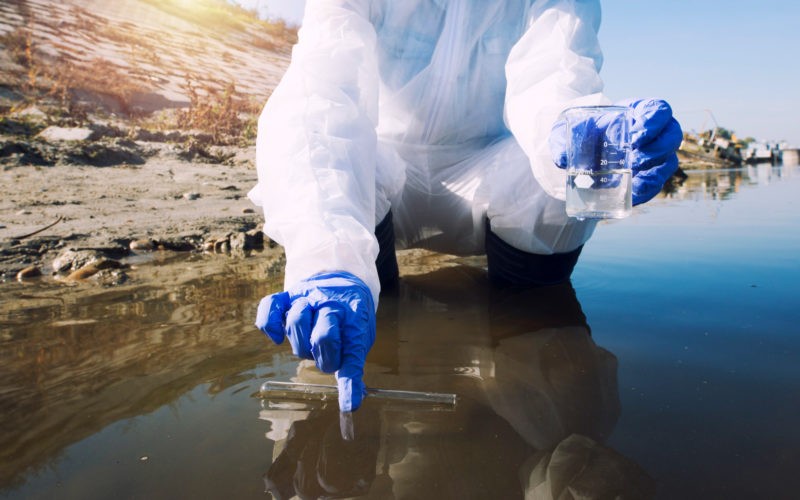A recent study by the Veterans Affairs (VA) estimates that over one million people may have been exposed to contaminated drinking water at Camp Lejeune in North Carolina from 1953 to 1987. This exposure is linked to a variety of severe health problems. Many veterans, civilian workers, and their families are now seeking compensation through the Camp Lejeune water contamination lawsuit.
Confused about the details of the lawsuit and whether you might qualify? We’ve got you covered. This article dives into people’s five most common questions about the Camp Lejeune water contamination lawsuit, helping you gain in-depth knowledge about the lawsuit.
What are the Camp Lejeune Lawsuits About?
The Camp Lejeune water contamination lawsuit stems from a decade-long public health crisis. From 1953 to 1987, the drinking water supply at Camp Lejeune in North Carolina was contaminated with harmful chemicals, like industrial solvents and cleaning agents, leaking from nearby storage tanks. These contaminants can cause severe health problems, including some cancers, birth defects, and various long-term illnesses.
The exact health effects vary depending on the contaminant and the individual’s exposure level. However, some of the health problems potentially linked to the contaminated water at Camp Lejeune include various cancers, such as adult leukemia, kidney cancer, and certain types of childhood cancers. We’ll explore the specific illnesses in more detail later in the article.
Who Can Be Held Liable for the Water Contamination?
Multiple parties potentially face liability for the Camp Lejeune water contamination issue.
- U.S. government: As the owner and operator of Camp Lejeune, they acknowledged their role. In 2012, President Obama signed legislation providing $2 billion in healthcare for affected veterans and families.
However, a 1950 Supreme Court ruling prevented lawsuits against the government for service-related injuries until the PACT Act of 2022, which included the Camp Lejeune Justice Act.
- Private contractors: Companies operating facilities on the base, like dry cleaners, could also be liable. For instance, in 2016, a federal court ordered a contractor to pay $3.7 million to a former Marine exposed to toxins at Camp Lejeune.
- Chemical manufacturers: While some may have settled without admitting fault, manufacturers of the contaminating chemicals can be held liable. Lawsuits against them have resulted in significant settlements, like a $670 million deal with DuPont and Chemours in 2017.
Why Are Individuals Filing Camp Lejeune Lawsuits?
A floodgate of Camp Lejeune lawsuits emerged recently due to a shift in the legal landscape. Previously, two key hurdles blocked lawsuits:
- 1950 Supreme Court ruling: This ruling prevented military members from suing the government for service-related injuries.
- North Carolina’s statute of repose: This law limited civil lawsuits to within ten years of the incident.
These restrictions resulted in the dismissal of over 900 lawsuits in 2016. However, the tide turned with the PACT Act of 2022, specifically the Camp Lejeune Justice Act. This act, effective August 10, 2022, allows eligible individuals to file claims and lawsuits for damages related to the base’s contaminated water.
Who Is Eligible to File the Camp Lejeune Lawsuit?
The Camp Lejeune Justice Act allows lawsuits for those who lived, worked, or otherwise were exposed to the contaminated water at Camp Lejeune for at least 30 days (not necessarily consecutive) between August 1, 1953, and December 31, 1987.
To win the case, you’ll need to show a connection between your exposure and your illness, but this is a more lenient standard than usual toxic tort cases.
What Illnesses Are Linked to the Water Contamination at Camp Lejeune?
The contaminated water at Camp Lejeune has been linked to several health problems.
Some of these conditions include:
- Various cancers, such as adult leukemia, kidney cancer, and certain childhood cancers.
- Birth defects.
- Neurological disorders like Parkinson’s disease.
- Aplastic anemia is a blood disorder affecting bone marrow.
It’s important to note that the Department of Veterans Affairs (VA) maintains a list of presumptive conditions, meaning certain illnesses are presumed to be related to Camp Lejeune water exposure if diagnosed. While this list can help, a medical evaluation by a qualified healthcare professional is crucial to determine if your specific illness is connected to the contamination.

How Should a Lawsuit Be Filed?
The Camp Lejeune Justice Act established a two-step process for pursuing compensation:
- Administrative Claim: First, file a claim with the Department of the Navy’s Office of the Judge Advocate General (JAG). This initiates an internal review process.
- Lawsuit: If the JAG denies your claim or fails to reach a decision within six months, you can file a lawsuit in the Eastern District of North Carolina.
Following the February 10, 2023, deadline for the initial waiting period, a surge of lawsuits began. Thousands more are expected as unresolved claims work through the system. As of February 2023, the JAG reported receiving over 20,000 claims, with none yet fully adjudicated.
The statute of limitations for filing lawsuits may change, so consulting with an attorney is recommended to ensure you meet all deadlines.
Final Word
Remember, the deadline for filing lawsuits may change. It’s crucial to consult an attorney to ensure you meet all current and potential future deadlines.












